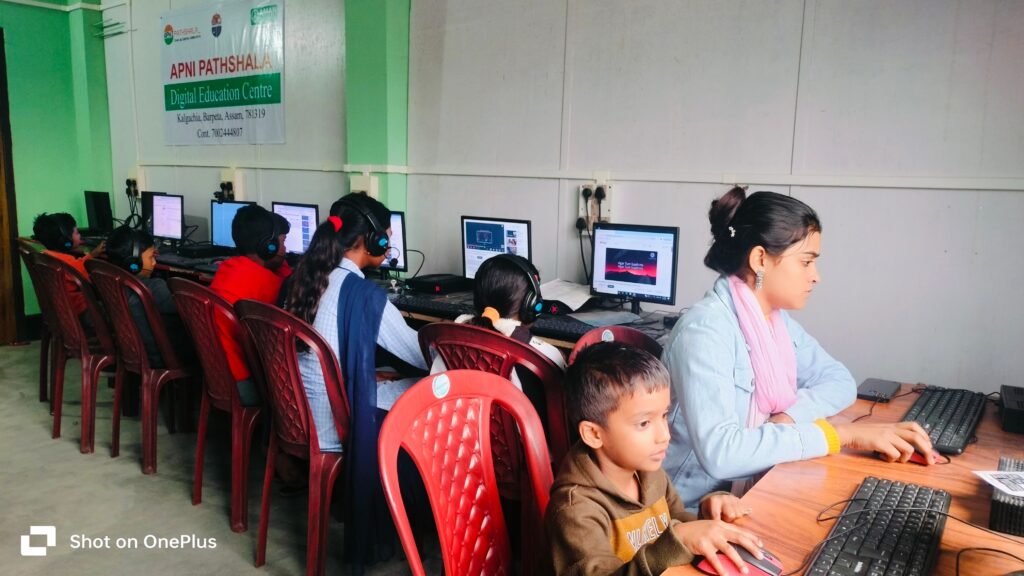
As a parent, it’s natural to worry when you see your child losing interest in learning, especially when the pressure of exams seems to overshadow the joy of discovery. The rigid focus on rote memorization in traditional schooling can be disheartening, but there’s hope. By shifting the focus from grades to genuine understanding and curiosity, you can reignite your child’s passion for learning. One powerful way to achieve this is through community microschools—a flexible, personalized approach to education that prioritizes critical thinking, creativity, and self-directed learning over mere test scores. Below is the conversation between a Parent and Principal about a child’s interest in traditional schooling :
Parent: I’m so worried about my son. He’s in the 8th grade now, and all I hear from his school is how important it is for him to prepare for exams. But it seems like all he’s learning is how to cram information without really understanding it. He doesn’t seem to enjoy learning anymore. I feel helpless—what can I do to help him?
Principal: It’s heartbreaking to hear that, but unfortunately, it’s a reality many parents face today. The focus on exams and rote learning has become the norm, especially in expensive private schools and commercial coaching centers. These institutions are often driven by results, and in the process, they overlook the importance of fostering a love for learning and critical thinking.
Parent: I want him to be curious and think for himself, not just memorize facts for exams. Is there a way I can support that at home?
Principal: Absolutely, and I commend you for wanting to act. The first step is to shift the focus from grades to learning. Encourage your son to explore topics that interest him outside of the school curriculum. You can help him find books, documentaries, or even online courses that spark his curiosity. The goal is to make learning a joyful and self-directed process, rather than a chore.
Parent: That makes sense, but with the school’s pressure, I’m afraid he won’t have time for any of that. How can I balance it all?
Principal: It’s a challenge, no doubt. But even minor changes can make a significant difference. For example, you can set aside time every day for him to pursue something he’s passionate about. It doesn’t have to be long—30 minutes before or after his homework. This way, he has a chance to engage in learning that’s driven by his own interests, which can reignite his enthusiasm.
Parent: I’ve heard a lot about alternative education models in other countries, like the community microschools in the US. What are those, and could something like that work here?
Principal: Community microschools are an incredible concept that’s gaining traction because they address many of the issues you’re concerned about. Unlike traditional schools, these microschools focus on small groups of students, often in a more flexible and personalized environment. The curriculum is usually customized to the students’ interests and needs, allowing them to learn at their own pace and dive deep into subjects they care about.
In the US, these schools have shown remarkable success in helping students become self-directed learners. They’re not just preparing children for exams but for life—teaching them how to think critically, solve problems creatively, and work collaboratively.
Parent: That sounds amazing! But starting something like that must be difficult, especially here where the education system is so rigid.
Principal: It can seem daunting, but it’s possible, and the impact can be profound. In fact, running a community microschool can be far more fulfilling than working in a corporate job. You get the opportunity to directly influence children’s lives, helping them discover the joy of learning and nurturing their natural curiosity. And yes, you can get paid for doing this!
In many ways, it is about going back to the basics of education—where learning is about exploration, discovery, and growth, rather than just scoring well on tests. It’s a chance to create a learning environment that values knowledge and skills over rote memorization, and where children can truly thrive.
Parent: I love the idea of helping kids enjoy learning again, but I am not a teacher. How could I run a microschool?
**Principal:** You do not need to be a traditional teacher to run a microschool. What you need is a passion for helping children learn and a willingness to create an environment where they can explore and grow. In fact, many successful microschools are run by parents who, like you, were simply concerned about the direction education was taking and decided to do something about it.
You can start small, with a group of neighborhood children. Partner with other parents or educators who share your vision. The key is to create a space where children feel safe, supported, and excited to learn. You’ll be surprised at how quickly children adapt to and flourish in an environment that respects their individuality and encourages their interests.
Parent: It sounds like a dream come true. But I’m still worried about how to get started and whether it will be sustainable in the long run.
Principal: Starting a community microschool does take effort, but there are plenty of resources available to guide you. Many organizations offer support, from curriculum ideas to advice on managing the planning. Plus, as the idea of alternative education grows, more parents are looking for these kinds of options, which means you could find a community of like-minded individuals who are eager to help and collaborate.
As for sustainability, the beauty of a microschool is that it’s adaptable. You can grow it at your own pace, and because it’s a smaller, more personal operation, it doesn’t require the massive overheads that traditional schools do. The most important thing is to stay focused on your vision—creating a space where children can learn in a way that’s meaningful and enjoyable for them.
Parent: You’ve given me a lot to think about. I never imagined I could be part of something like this, but now I’m feeling inspired.
Principal: That’s wonderful to hear! Remember, the most important thing is your child’s love for learning. If you can nurture that, you’re already making a dramatic difference. And if you decide to take the plunge and start a microschool, know that you’ll be doing something truly impactful—not just for your own child, but for many others as well.
Parent: Thank you so much. I’m going to start looking into this more seriously. It feels like this could be the answer we’ve been searching for.
Principal: You’re very welcome. I’m here to support you in any way I can. Just remember, love kids? Start a community microschool! There’s nothing more fulfilling than helping children discover the joy of learning.
We can help you do this at www.teachtoearn.in !
